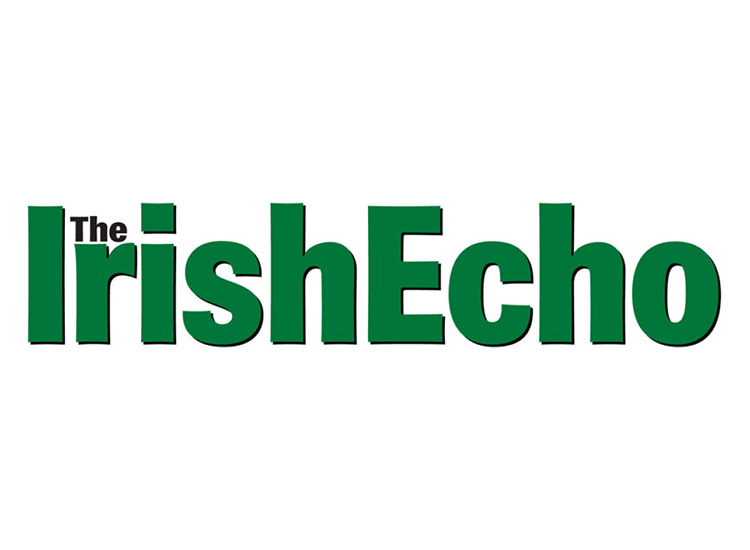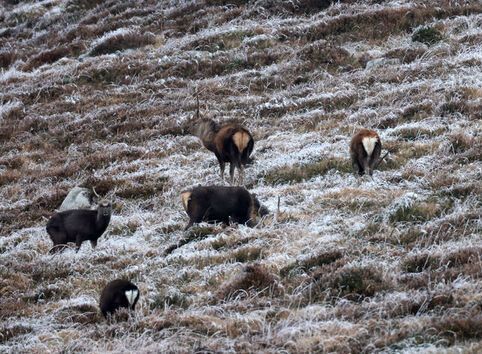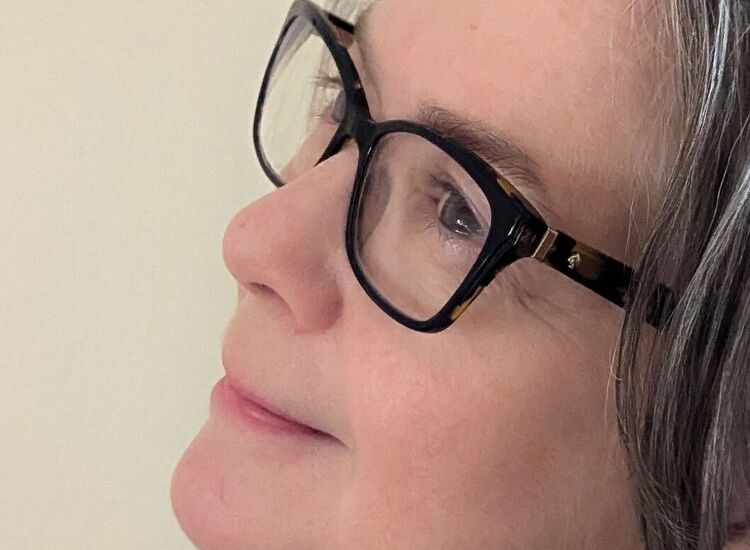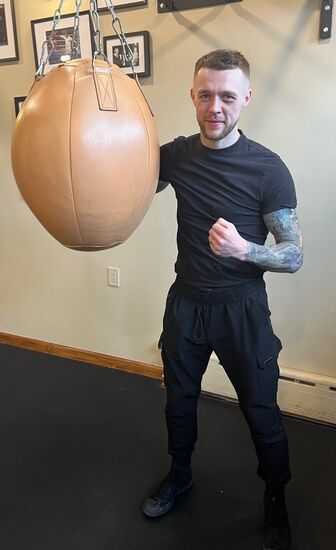Dr. Helena Sheehan is professor emerita at Dublin City University, where she taught history of ideas and media studies.
Page Turner / Edited by Peter McDermott
Helena Sheehan would’ve preferred to have joined the Jesuits, as some cousins had done before her. At 18, though, she had to make do with the novitiate of the Sisters of Saint Joseph. She seemed destined for the part, or at least well-prepared. One Halloween during her childhood, her mother made for her a small but exact replica of an SSJ habit. Wearing it she liked to boss around her friends; a father of one of them named her Sister Mary Impatient of the Outrageous Order.
Sheehan remembers in “Navigating the Zeitgeist” that growing up she had three role models available to her: housewife-mother (her father, a frontline veteran of the war in Europe, commuted to his white-collar job), nun-teacher and shop assistant-maiden aunt. She was most familiar with the first one, being the eldest of eight children (a ninth died), and resented the time her domestic duties took her away from her books.
Later the author asks rhetorically of her choice, given that she had some exposure to civic life in Philadelphia and campaigned for JFK when she was 16: “Why would I renounce all my aspirations and ambitions to explore the wider world in order to enter a cloister?” The reasons can be mostly found in the intense Catholic world of her upbringing.
That world fit quite snugly into the broader American culture. To help describe the latter, Sheehan, who has written highly-regarded studies of Irish television drama, tells us what people were viewing on the small screen.
The only television she actually saw during her novitiate from 1962 through 1965 was the coverage of the president’s funeral on Nov. 25, 1963 — and she cried all the way through it. “John XXIII also died that year and we mourned him, too, even as the congregation evaded the call for renewal that he issued,” she writes. “Together these two Johns had presided over the transformations of Church and state that inspired us so strongly in these years of transition.”
Sheehan had felt called to give herself “without reserve” when joining the Sisters of Saint Joseph, and now felt called in another direction. One might say it was quite inevitable in retrospect. “I was happiest [as a teenager] at debating tournaments, which opened to me my first serious steps beyond home, church, and school,” she writes in the first chapter. “My best friends were debaters from other schools, especially male schools.” Her first truly intellectual friendship was with a young Jesuit, who was her teacher and debate coach. “Greg was the most exciting person I had ever met,” she recalls. “There was something so fresh, so bold, about the ideas he introduced and the way he pursued them.” There would be other such people after she left the religious life behind.
“‘Navigating the Zeitgeist’ is an attempt to fuse autobiography with intellectual, social, political history,” its author told the Echo. “It opens in cold-war USA and portrays the last days of the the old order in church, state, home and popular culture and then within convent walls. It conveys the social turmoil of the 1960s in universities, in homes, on streets, in the very fabric of everyday life, when I became active in the New Left, marching many miles for civil rights, for women’s liberation, against the Vietnam war and then against the whole system shaping all the terrible injustices of poverty, racism, sexism, imperialism.

“We talked long into the night calling into question everything we had been brought up to believe,” she added. “The story then moves to Ireland with forays into the rest of Europe, both east and west, dealing with my involvement in republican, social democratic and communist parties and social movements as well as academic life as it has evolved over the decades.”
The story moves to Ireland because Sheehan did in 1972 and stayed. After years of protest and alienation from the country of their birth, some on the left with Irish ancestry were drawn “to seek roots in a history longer and deeper than that of America.” From afar, Sheehan took the side of the Officials after both the IRA and Sinn Féin split at the Troubles’ outset, while her friend Tom Hayden sympathized with the Provisionals. In early 1972, she helped organize a North American speaking tour for Billy McMillen, leader of the Officials in Belfast. “He was charming and warm and funny,” she remembers about their first meetings, and “strikingly non-macho.”
In Dublin, Sheehan met the Officials’ main leaders — Cathal Goulding (“The description ‘charismatic’ was coming to be used too loosely, but it truly applied to him,” she writes), Sean Garland and Tomás Mac Giolla. That trio and some others are portrayed positively. Quite a few get mixed or negative reviews. One such is Seamus Costello, a republican who embraced electoral politics and held local office but was strongly opposed to Goulding’s longterm ceasefire policy, announced in May 1972: “He could be eloquent enough when he spoke, but most often he just listened and watched with a steely gaze that gave me a chill.”
Nonetheless, Costello is linked in a particular memory with the person for whom she expresses the deepest bonds of affection, McMillen, her first contact in the movement: “One night, it was all cozy and almost comfortable when I was in a pub with Billy and Seamus drinking, talking, and laughing for several hours. I would think back on it later with a strong sense of pathos, in light of what happened later, in light of how they both died. On that night, however, we were comrades and all seemed well.”
It was at McMillen’s invitation that Sheehan was in Belfast on July 21, 1972 — Bloody Friday, the day in which Provo bombs killed nine and injured 130. It soured her further on the whole idea of armed struggle. Still, she accepted an invitation to join the Officials’ military wing. She was an unlikely IRA member for several reasons, but she wanted to be fully involved in the movement and that was where policy was first discussed.
Sheehan describes her initial impressions of Dublin, Belfast and more rural parts, and then of the America she returned to visit in 1973. She writes, “I found many Irish-American images of Ireland romantic, naive, and even ridiculous. One guy always wore a black beret, combat jacket, and belt buckle, with big brass letters spelling ‘IRA.’ I heard him tell his girlfriend: ‘My mother is first. Ireland is second. You are third.’ I hope he grew out of it.”
The story back in Ireland takes in the birth of her son and later her daughter, early motherhood, and marriage in a Dublin registry office (after the dissolution of her first, which took place in a Catholic church in Philadelphia).
There is also the trauma of the split with Costello, who with his supporters would form the IRSP and its military wing, the INLA, in late 1974. Once the angry words turned into shooting, Sheehan’s husband Eoin Ó Murchú was a “prime target” as a full-time polemicist for the Officials. Garland was shot by the INLA in March 1975 and Sheehan recalls visiting him when he was close to death in a Dublin hospital. He survived, but McMillen was murdered in a Belfast street while shopping with his wife one April afternoon. (Costello was assassinated in 1977, also in broad daylight, while sitting in a car in inner-city Dublin; in 1982, the INLA killed the Official IRA member it said was responsible.)
The majority who agreed with the Goulding ceasefire line were divided among themselves on other issues, and Sheehan and Ó Murchú left to join the Communist Party of Ireland in late 1975. Her life had come full circle since her suburban American childhood in the 1950s.
The CPI was somewhat smaller than Official Sinn Féin, but it was grappling with big international issues. By this time, the various strands of Eurocommunism were collectively stronger than orthodoxy in the West, not least in terms of numbers. The Italian party, for instance, garnered 12.6 million votes in 1976, and had more rank and file members than there were voters in an Irish general election. In Dublin, however, those who looked to Moscow rather than Rome prevailed in a power struggle and Ireland’s Eurocommunists left to join the Labour Party. Sheehan was sorry to see them go. In 1979, she broke with the CPI herself for various reasons. Ó Murchú stayed.
Finally in the early 1980s, Sheehan joined a third Irish political party, Labour, which was as divided as the first two on crucial issues, most obviously on whether or not to accept cabinet seats in a conservative-dominated government. She forged a close relationship with fellow academic Michael D. Higgins (president of Ireland since 2011) and worked with other leaders on the party’s left wing.
Sheehan’s narrative ends in 1988 — 20 years after ’68, the New Left’s most symbolic year. She’s writing a sequel that will begin in Eastern Europe and move on to South Africa and elsewhere. There’s a lot to tell.
Helena Sheehan
Date of birth: July 30, 1944
Place of birth: Philadelphia
Residence: Dublin
Published works: Books: “Marxism and the Philosophy of Science: A Critical History,” “Irish Television Drama: A Society and Its Stories,” “The Continuing Story of Irish Television Drama: The Time of the Tiger,” “The Syriza Wave,” “Navigating the Zeitgeist.” Many articles, most recent: “Marxism, Science and Covid-19” and “Class, Race, Gender and the Decolonization of Knowledge.”
What is your writing routine? Are there ideal conditions?
Early rising at 5:30, fresh air and exercise along with practical tasks through morning, reading and then writing in the afternoon, reading and watching tv in the evening. Ideal conditions: hours of uninterrupted time.
What advice do you have for aspiring writers?
Take time to work out your basic world view and epistemological criteria. Be organized. Keep fit. Ask yourself what do you really have to say and then say it with precision and passion.
Name three books that are memorable in terms of your reading pleasure.
Camus, “The Myth of Sisyphus”; Waddell, “Peter Abelard”; Engels, “The Origin of the Family, Private Property and the State”; Caudwell, “Studies and Further Studies in a Dying Culture.”
What book are you currently reading?
I usually have both a factual and fictional book on the go. So I am now reading Obama’s “A Promised Land” and Tim Parks’s “Italian Life.” The Obama memoir confirms what a fine writer he is – intelligent, nuanced, reflective – which makes me wonder if that makes him better or worse than his predecessor and successor, because he knew so much better than what he did in choosing Wall Street over Main Street and continuing imperial wars. The Parks novel gives a vivid picture of the baronial nature of Italian universities, confirming everything every Italian colleague or student has ever told me.
If you could meet one author, living or dead, who would it be?
Christopher Caudwell
What is your favorite spot in Ireland?
Anywhere I can walk by the sea.








